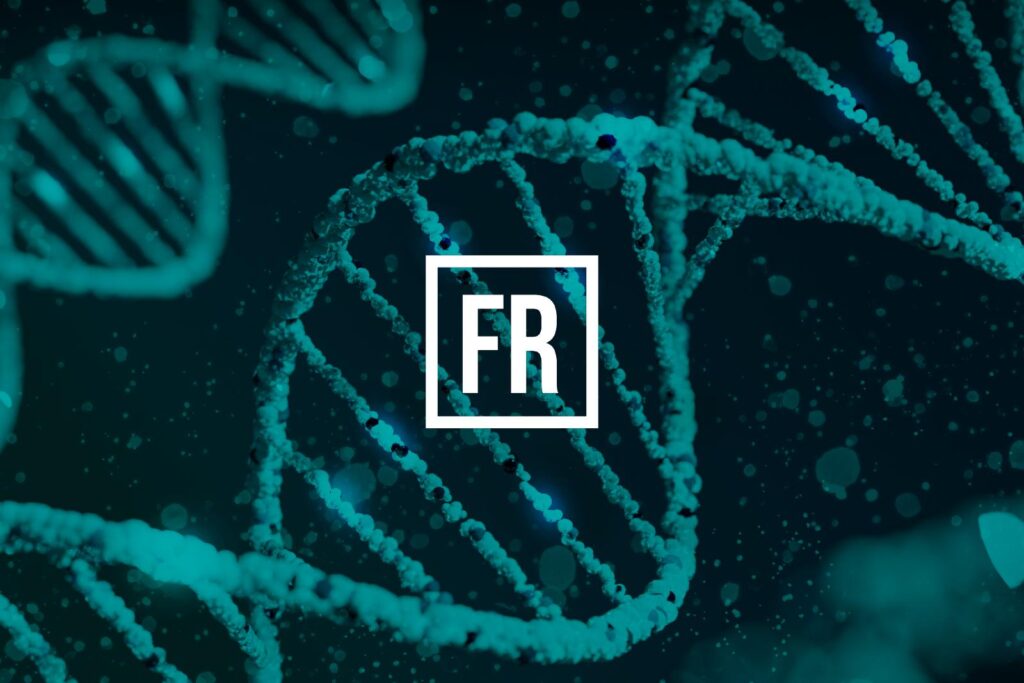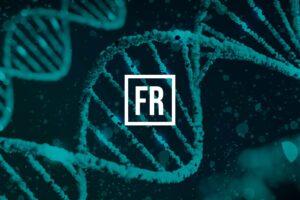The “miracle” baby.
The survival of the immunologically incompatible fetus during pregnancy remains a paradox to this day. Half of the embryo’s genetics are inherited from the father which means that there is an immunologically huge difference between it and the mother. Under normal circumstances, an allograft1 with such level of immunological incompatibility would not be tolerated by the mother’s immune system and graft rejection would soon follow. However, in a healthy pregnancy, a state of mutual tolerance develops between mother and fetus which allows not only the for the fetus to evade immunological rejection, but more importantly, for the mother’s immune system to actively help establish and facilitate pregnancy.
It is precisely the existence of the pregnancy paradox that allowed for the introduction of gamete2 donors in assisted reproduction, since independently of the fetus’ genetic origins, if everything goes well, the mother’s immune system will tolerate and accept it. Does this however, means that all donor-using pregnancies work? As with own-egg3 pregnancies, the answer to this question is no. Immunological “protection” of the fetus is not guaranteed and today we have uncovered a number of genetic factors which can affect successful development of immunological tolerance for the fetus and, at least in part, explain a large part of what was until now called “unexplained infertility” so that we can prevent recurrent pregnancy loss (RPL).
Passive vs. active immunological tolerance.
So, how exactly this “miracle” of immunological evasion takes place? In order to understand this, we need to understand the difference between passive and active immunological tolerance. Immunological cell recognition takes place through interactions of cell-surface proteins encoded by the human leukocyte antigen (HLA) complex on chromosome 6 involved in the regulation of the immune system. Because the HLA genes are highly variable, people may carry a different “variations” or alleles4 of these genes. The different combinations of alleles of each of these HLA genes lead to complex sequences, called haplotypes, which may differ amongst individuals in a population. HLA cell surface proteins of an individual cell can bind fragments of proteins expressed (i.e., produced) by the cell and present them to the immune system. This mechanism allows the cells of the immune system to screen for “abnormalities” including viral proteins expressed following cell infection, or for expression of proteins that are genetically foreign to the body which could indicate potentially hazardous cell mutations for one’s health. Once an “abnormal” cell has been detected, the immune system may take action to dispose of it, protecting the body from infection or cancer.
So, the same mechanism is activated during a transplantation. When the foreign tissue (eg. An organ), the allograft, is introduced in the recipient’s body, the immune system will screen it, checking for genetic incompatibility. If the allograft is not compatible enough with the recipient in regard to its HLA haplotypes, then the graft may be rejected. Therefore during a transplantation a very thorough screening for compatible donors takes place. If the donor and the recipient are a good HLA match, then the graft may evade rejection by the immune system. This way of evading immunological rejection is termed passive tolerance.
During pregnancy however, things don’t work this way. The embryo by default is very different than the mother as it carries a mixture of both the mother’s and the father’s genetic makeup, including maternal and paternal HLAs. So, it makes sense that a passive tolerance mechanism would not work. Indeed, not only genetic compatibility in the classic sense of the term, would not work, but in addition, it seems that genetic diversity of the embryo is favored. Indeed, while the mechanism through which maternal and fetal HLAs genes interact and affect the outcome of pregnancy are still unclear, it has been suggested that fetuses with HLA haplotypes similar to the mother’s (i.e. histocompatible fetuses) are more likely to be aborted than fetuses with whose HLAs differ from those of the mother (i.e. histoincompatible fetuses). This makes sense from an evolutionary point of view, as natural selection favors genetic diversity in a population, but it doesn’t make sense from an immunological point of view (hence the “paradox”).
It seems that for the embryo to survive its mother’s immune system, a different mechanism must apply. During pregnancy, the mother’s immune system must successfully identify the embryo as such. For this to happen a minimum level of genetic diversity (including HLAs) must exist. When this happens, a series of adaptive processes start to take place including the induction of immune suppressive regulatory T cells (Tregs) production and activation of uterine natural killer cells (uNKs). Tregs, will provide the required immunological tolerance for the embryo through a specialized regulation of the local uterine immunity, at the same time competing with the natural tendency of the immune system to reject it. If everything goes well, in the end, fetal-maternal tolerance will be achieved and the uterine environment will be immunologically privileged and baby friendly. This is called active immunological tolerance.
Uterine NK cells. A positive role of the immune system.
But this is only half the story. Achieving immunological evasion and fetal tolerance does not guarantee a successful outcome. Indeed, the immune system of the mother needs to actively facilitate important processes of pregnancy including embryo implantation and placentation. This is achieved through activation of a special uterine cell population called uterine natural killer cells (uNKs). In contrast to peripheral blood natural killer cells (NKs) which are highly cytotoxic, whith the role of kiling any cell in the body that is deemed “undesirable” by the immune system either because of infection or mutation, the uNKs are not cytotoxic while their activation is required to achieve a healthy term pregnancy. Uterine NK activation is achieved through a set of cell-surface receptor proteins called KIRs (killer immunoglobulin-like receptors) which act as “molecular switches” that turn uNKs “on”.
The (KIR)/HLA system is part of the process of maternal tolerance development towards the potentially allogenic fetus. The KIR/HLA system is likely linked with the primary stage in the pathogenesis of pre-eclampsia and defective placentation and is linked to. Uterine natural killer (uNK) cells are present in the uterine decidua during the period of placental formation and express members of the KIR receptor family that interacts with HLA class I molecules, primarily parental HLA-C, on target cells of the invading placental trophoblast. KIRs are a highly polymorphic family of genes with great variation between different individuals as well are their fetal ligands. Because of KIR polymorphism between individuals, different KIR/HLA-C genetic combinations occur in each pregnancy. The overall signal that NK cells receive from paternal trophoblastic HLA-C, depends on the ratio of activating and inhibitory KIR expressed by them. Therefore, allorecognition of paternal HLA-C by maternal KIR might influence trophoblast invasion as well as vascular remodeling, and by providing a balance during placentation to ensure maternal survival and an adequately nourished fetus, it can subsequently impact the outcome of pregnancy. Inhibitory KIRs are found more frequently in women with defective placentation, pre-eclampsia, fetal growth restriction or recurrent spontaneous abortion, and it has been suggested that specific combinations of maternal KIR may indicate a high risk for infertility especially in the presence of specific HLA-C paternal allotypes. In these cases, it is very important to proceed with specialized treatment. Correctly administrated treatment for HLA-C-KIR mismatch has been shown not only to be absolutely safe for mother and baby, but also to vastly increase the chances of a healthy term pregnancy.
Immunological compatibility and donor use
For a couple, the presence of immunological mismatch is not by choice as one does not select one’s spouse based on HLA and KIR compatibility. In such cases, very effective and safe treatments exists and specialized testing needs to take place whenever we are dealing with “unexplained infertility”, but this discussion is not in the scope of the present article. However, when we are discussing sperm, egg or embryo donation, or indeed even gestational surrogacy things are vastly different. In these cases, we are presented with a unique opportunity of eliminating potentially incompatible and problematic donors or surrogates and thus avoiding reproductive immunology problems vastly increasing success rates for assisted reproduction. Indeed, genetic screening of donors should be extended to include not only genetic disease that will result in health problems for the baby but also reproductive immunology genetic screening to avoid pre-, peri- and post-implantation problems including implantation failure, chemical pregnancies, and recurrent pregnancy loss.
In terms or reproductive immunology, the introduction of a third person (the donor) in the “mix” whether this is a sperm donor, an egg donor, a surrogate gestational carrier or a combination of these, things may get a little complicated. In this case, we don’t only have to evaluate the immunological compatibility of the two partners, but we need to analyze the HLA and KIR haplotypes of all donors and precisely calculate possible genetic outcomes and combinations of the embryos and how would these interact immunologically with the gestational carrier, whether it is the mother or a surrogate. For example, in terms of HLA matching, the use of a donor, introduces a desirable increase of genetic variation. Although a potential undesirable HLA match is not impossible, it however, less probable. On the contrary, the donor may represent a potential risk factor as far as KIR mismatch is concerned as, especially in the case of a high-risk KIR genotype of the mother, the donor represents an additional source of a potentially deleterious HLA-C2.
In conclusion, because an assisted reproduction method that includes donors or surrogacy, is a very expensive process and time-consuming process, when we have the opportunity to spare the patients from unneeded expenses and heartache we should do our best to do so. We strongly advocate donor testing for reproductive immunological compatibility including HLA and KIR typing. Furthermore, specialized advice in needed to help the IVF specialist and the patients evaluate the risks, select the right donor for them and ultimately significantly increase their chances of success.
1 allograft: The transplant of an organ, tissue, or cells from one individual to another individual of the same species
2 gamete: A mature sexual reproductive cell, as a sperm or egg
3 own-egg: When a woman uses her own eggs during assisted reproduction
4 allele: Different versions of DNA sequence at a given genomic location (gene).






